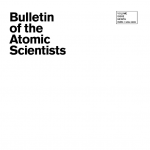How safe is nuclear power? A statistical study suggests less than expected
By Thomas Rose, Trevor Sweeting | March 3, 2016
After the Fukushima disaster, the authors analyzed all past core-melt accidents and estimated a failure rate of 1 per 3704 reactor years. This rate indicates that more than one such accident could occur somewhere in the world within the next decade. The authors also analyzed the role that learning from past accidents can play over time. This analysis showed few or no learning effects occurring, depending on the database used. Because the International Atomic Energy Agency (IAEA) has no publicly available list of nuclear accidents, the authors used data compiled by the Guardian newspaper and the energy researcher Benjamin Sovacool. The results suggest that there are likely to be more severe nuclear accidents than have been expected and support Charles Perrow’s “normal accidents” theory that nuclear power reactors cannot be operated without major accidents. However, a more detailed analysis of nuclear accident probabilities needs more transparency from the IAEA. Public support for nuclear power cannot currently be based on full knowledge simply because important information is not available.
Together, we make the world safer.
The Bulletin elevates expert voices above the noise. But as an independent nonprofit organization, our operations depend on the support of readers like you. Help us continue to deliver quality journalism that holds leaders accountable. Your support of our work at any level is important. In return, we promise our coverage will be understandable, influential, vigilant, solution-oriented, and fair-minded. Together we can make a difference.
Issue: Bulletin of the Atomic Scientists Volume 72 Issue 2
Keywords: Learning effect, normal accident theory, nuclear accident
Topics: Uncategorized















